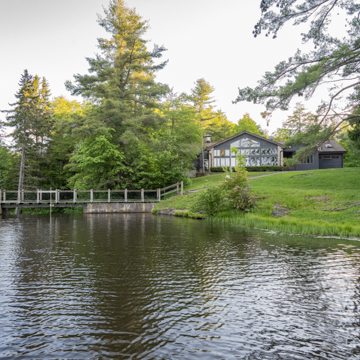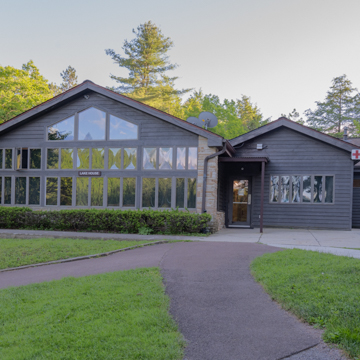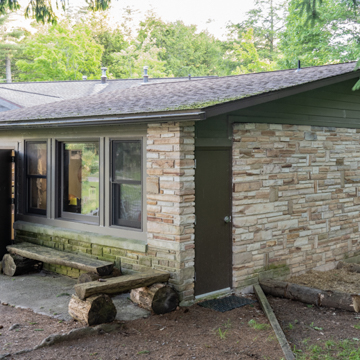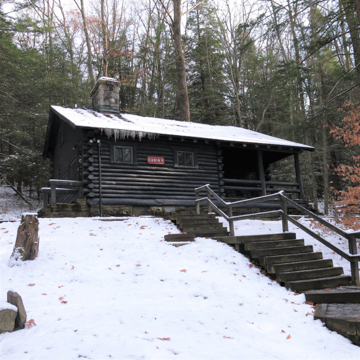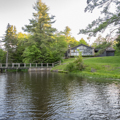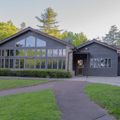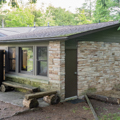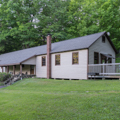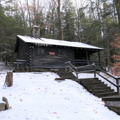Civilian Conservation Corps Camp S-52 built one of Maryland’s earliest state parks on farmland acquired through Resettlement Administration funding. Maryland state officials generally were slow to embrace the New Deal but welcomed the forestry and recreation work performed by CCC enrollees. Dedicated July 1, 1939, New Germany State Park offered a campground, a superintendent’s residence and park office, ten log cabins, and picnic shelters, all executed in the rustic manner popularized by the National Park Service. The log cabins with stone chimneys and foundations are arranged in a deliberately informal manner along a road at the south end of the lake. The lake at New Germany was a remnant of the Swauger family’s nineteenth-century saw- and gristmill operation that originally dammed Poplar Lick Run. A few late-nineteenth- and early- twentieth-century wood buildings from the former village of New Germany are still extant in the park, including a former doctor’s office and a school.
You are here
NEW GERMANY STATE PARK
If SAH Archipedia has been useful to you, please consider supporting it.
SAH Archipedia tells the story of the United States through its buildings, landscapes, and cities. This freely available resource empowers the public with authoritative knowledge that deepens their understanding and appreciation of the built environment. But the Society of Architectural Historians, which created SAH Archipedia with University of Virginia Press, needs your support to maintain the high-caliber research, writing, photography, cartography, editing, design, and programming that make SAH Archipedia a trusted online resource available to all who value the history of place, heritage tourism, and learning.















